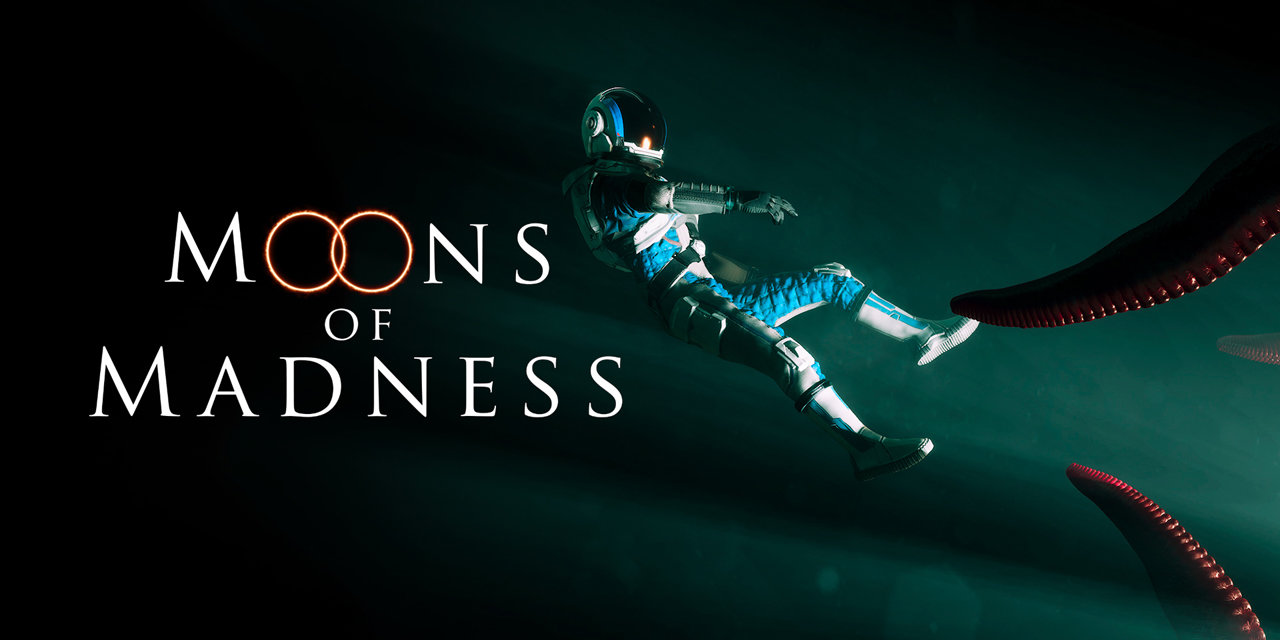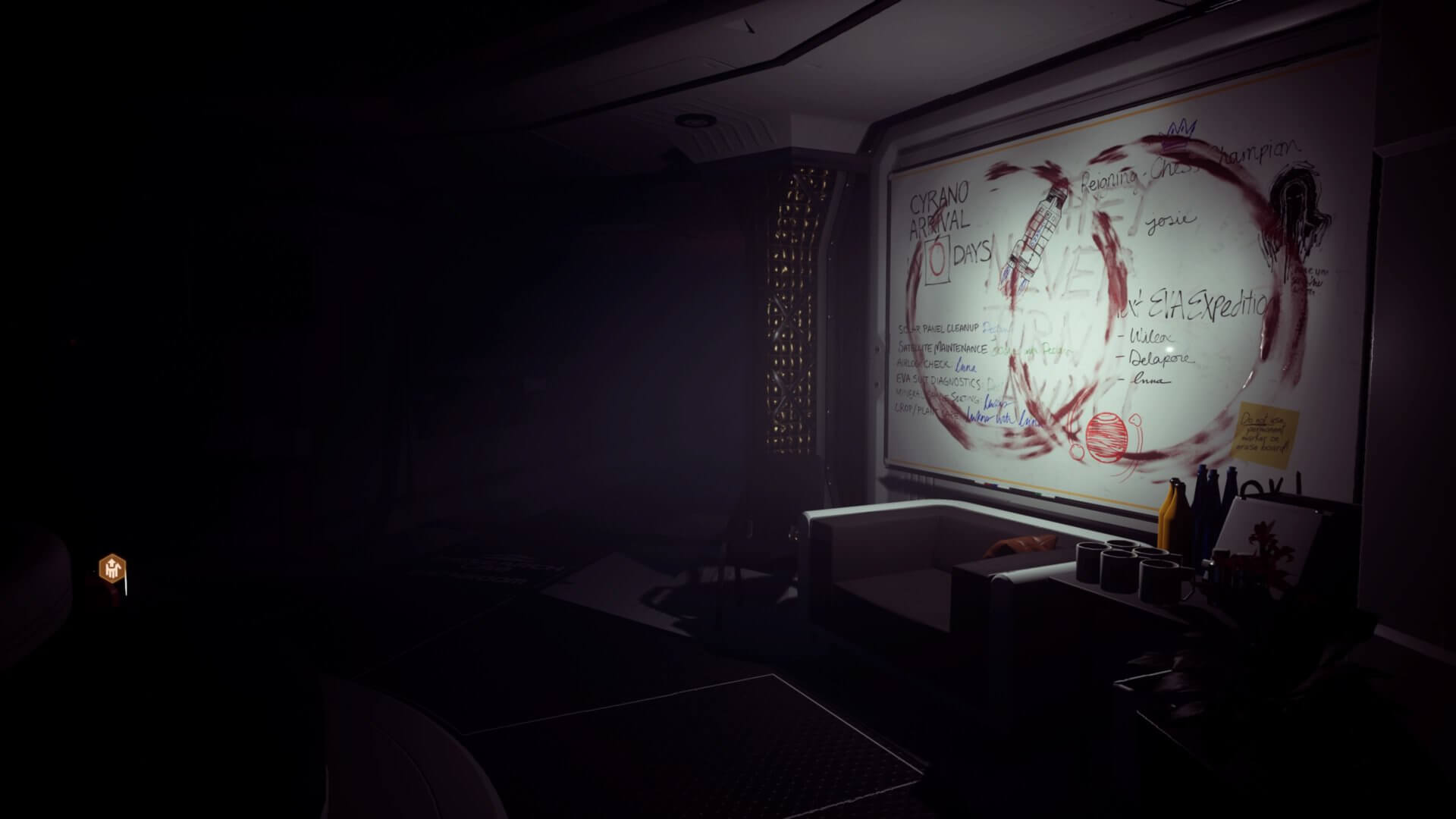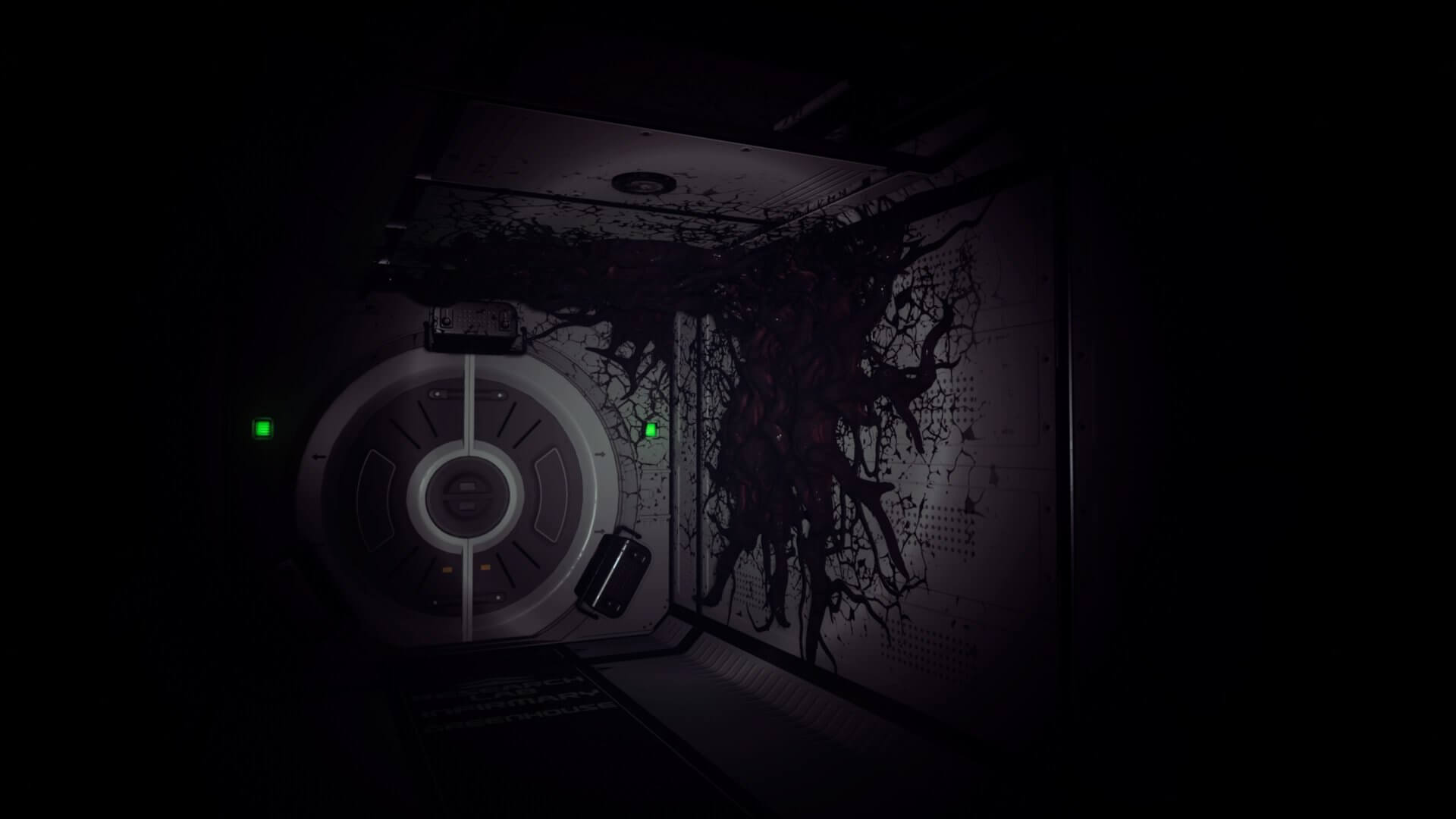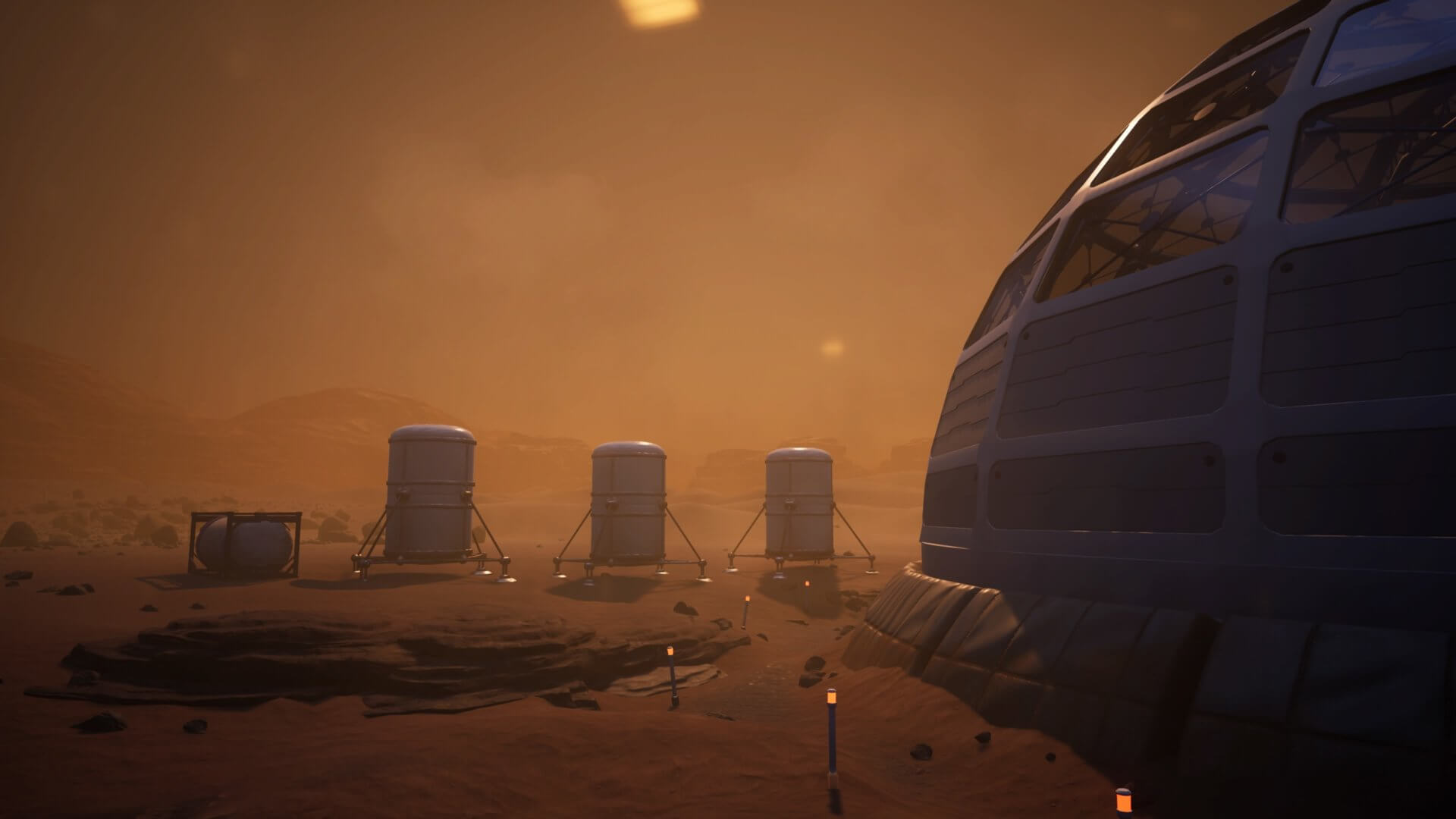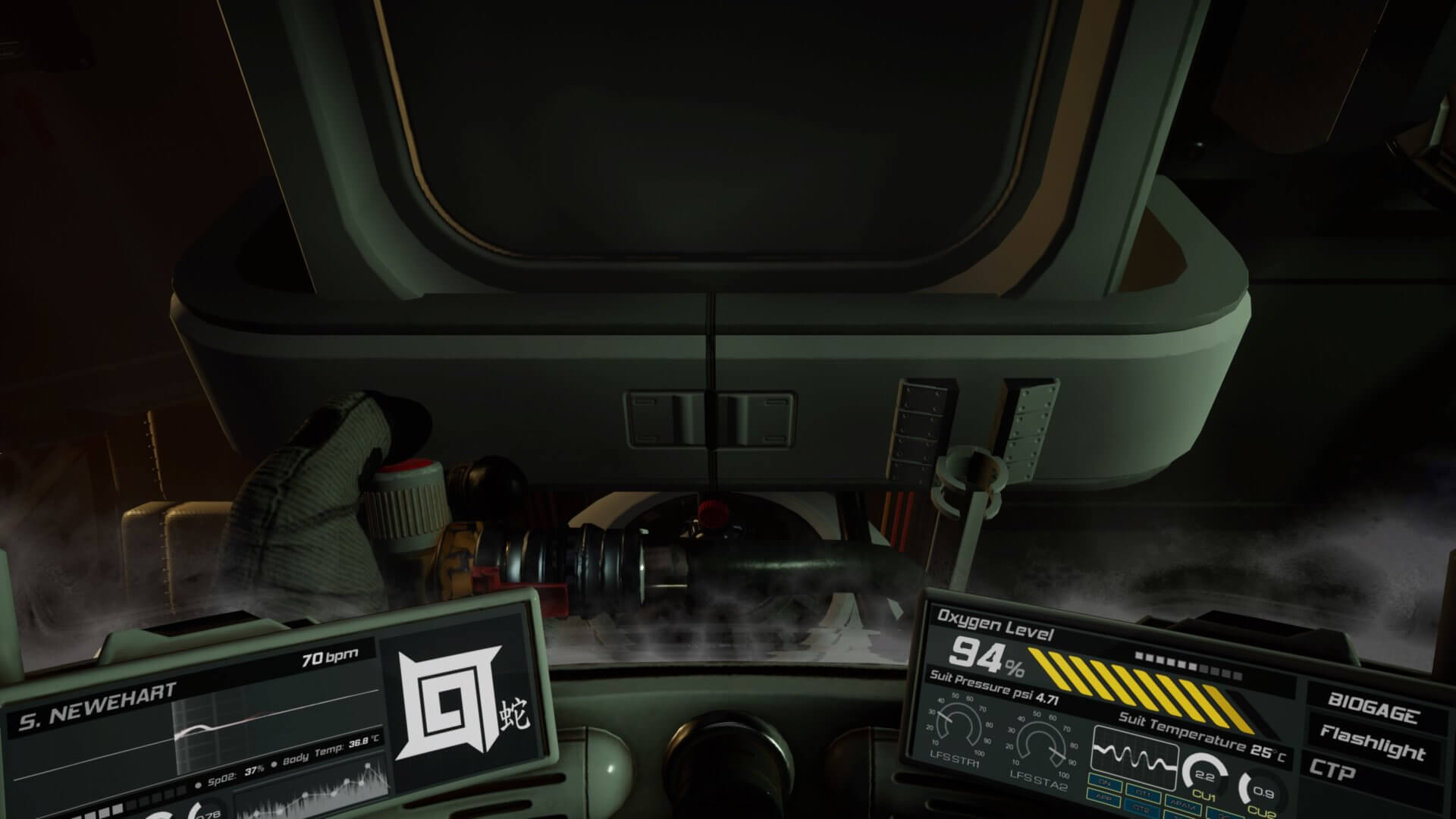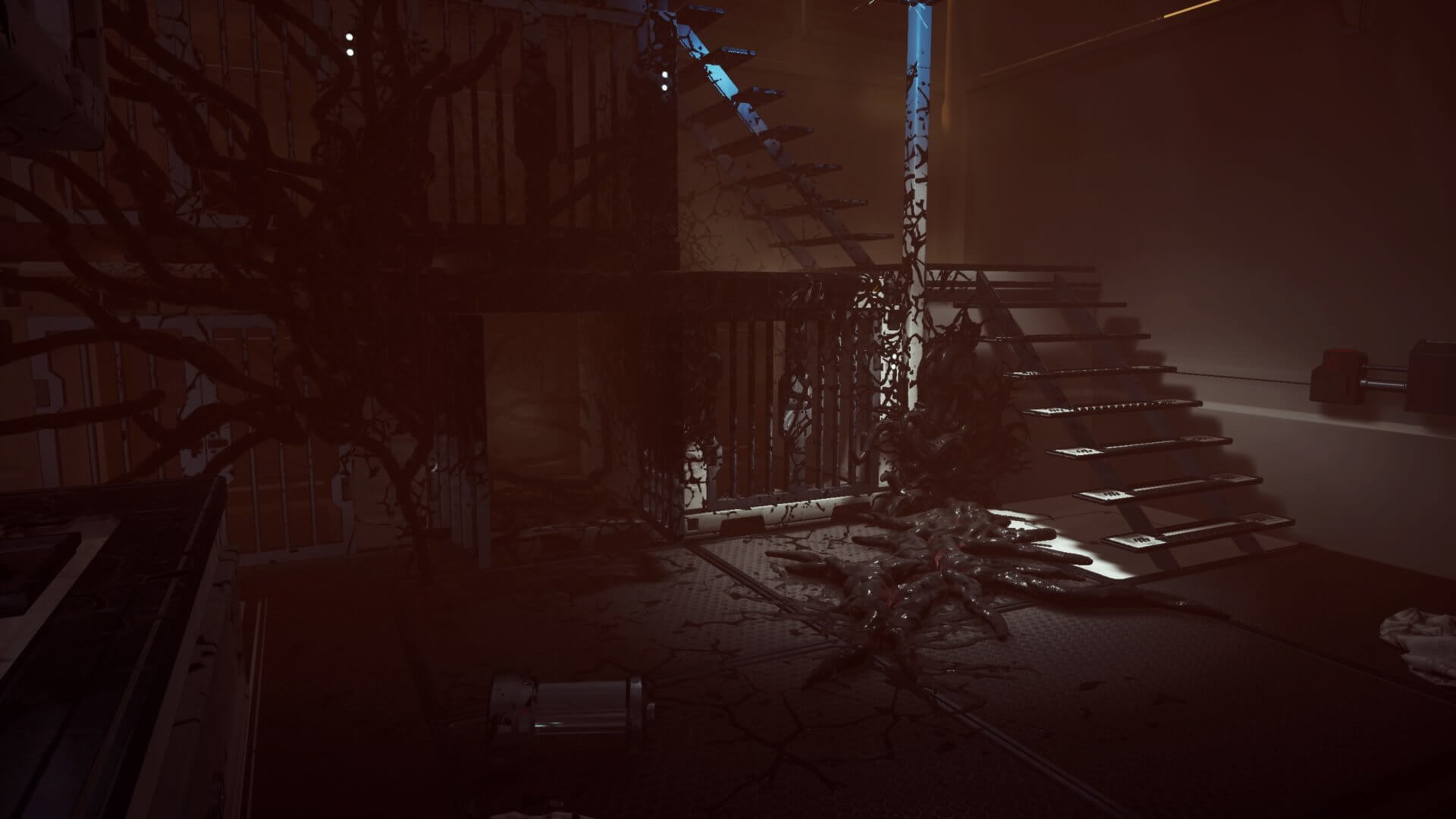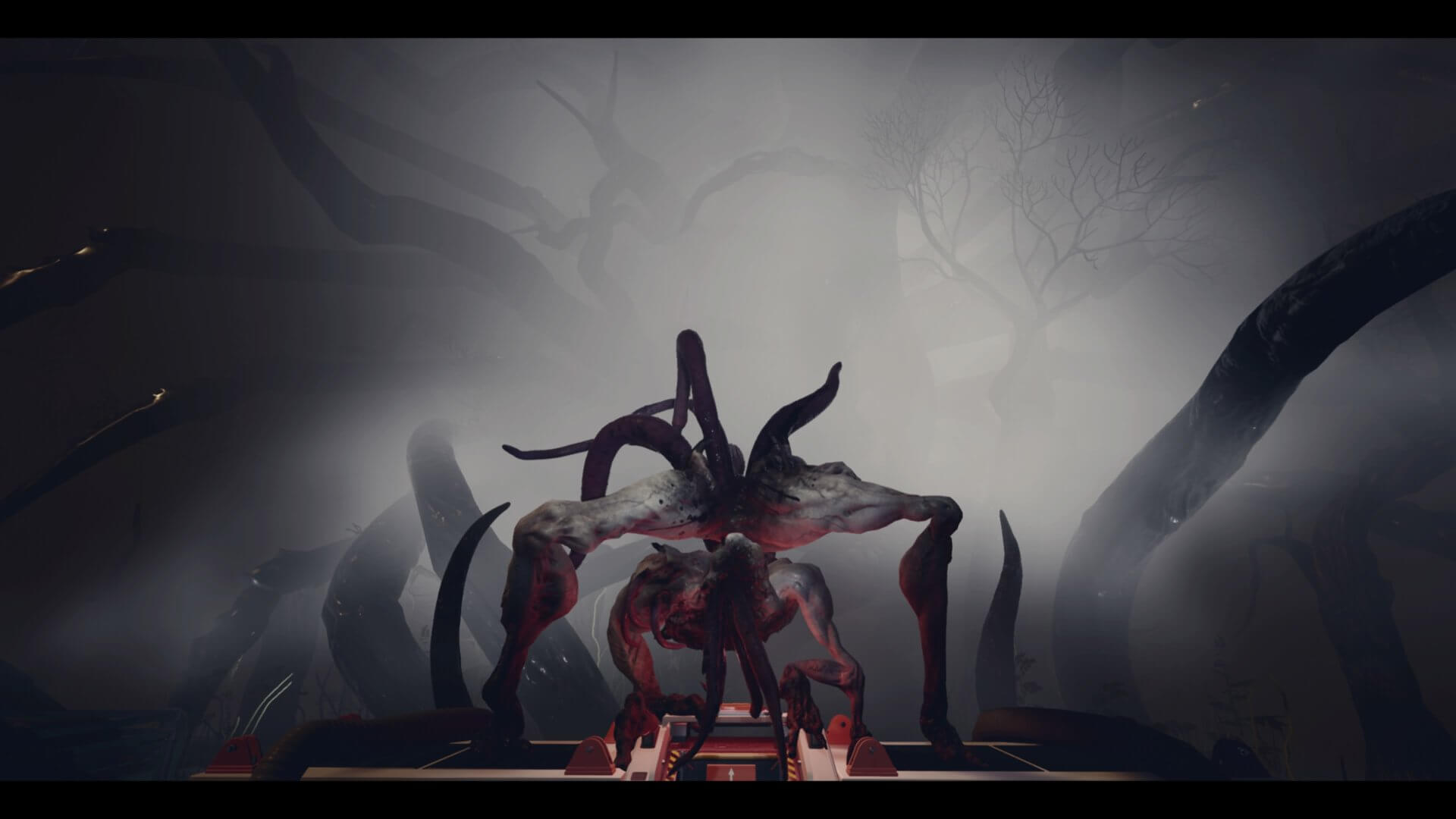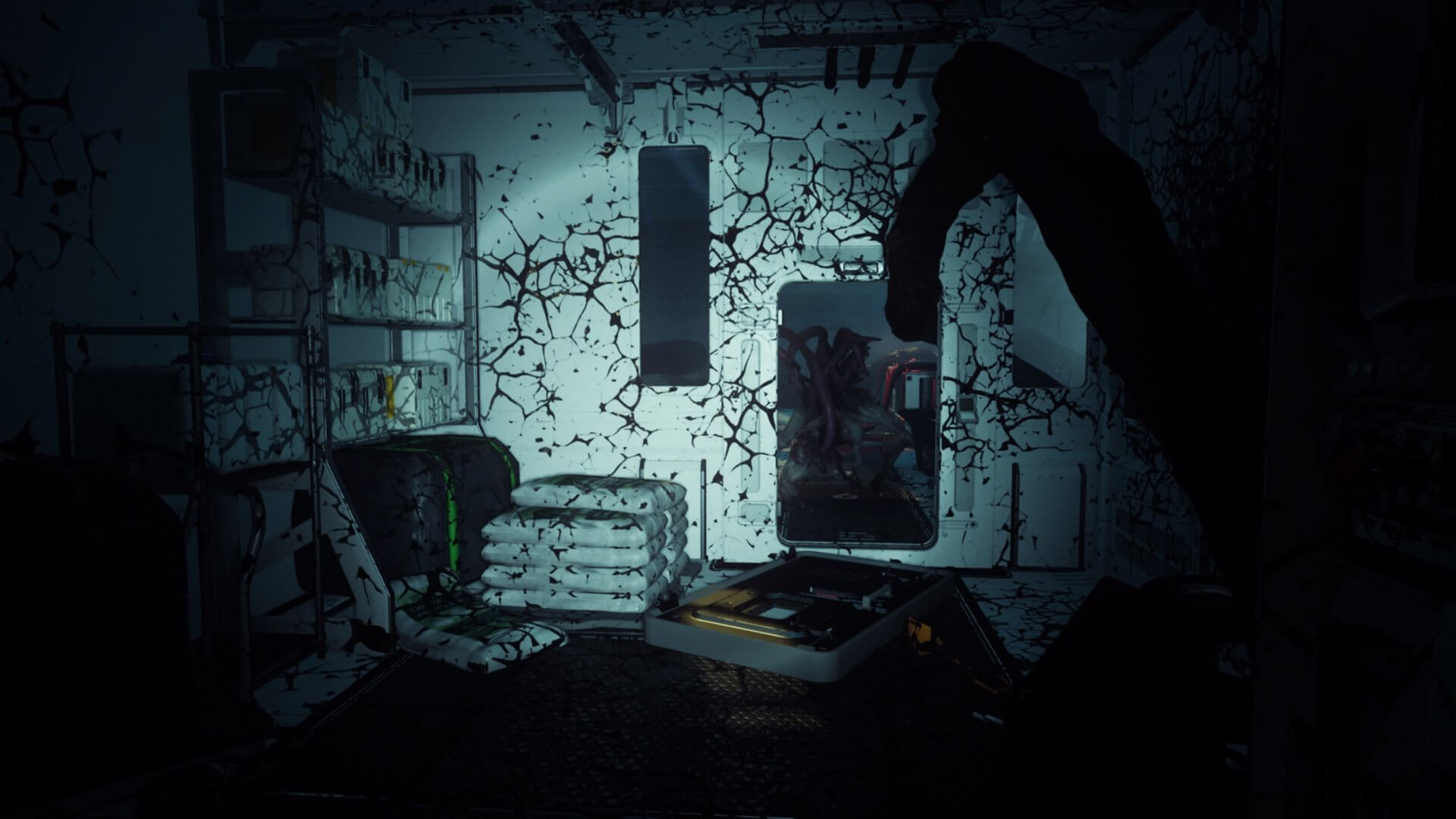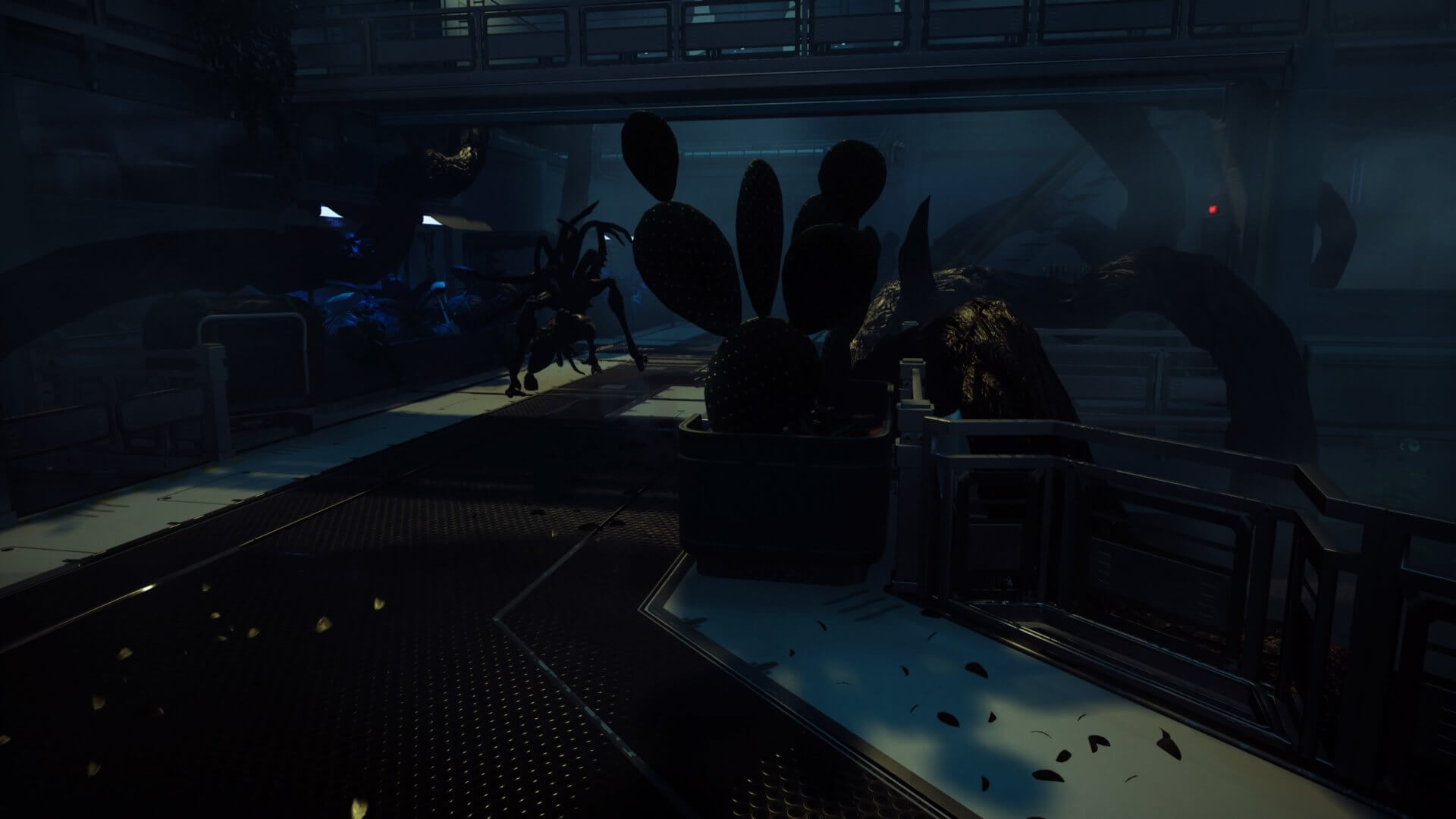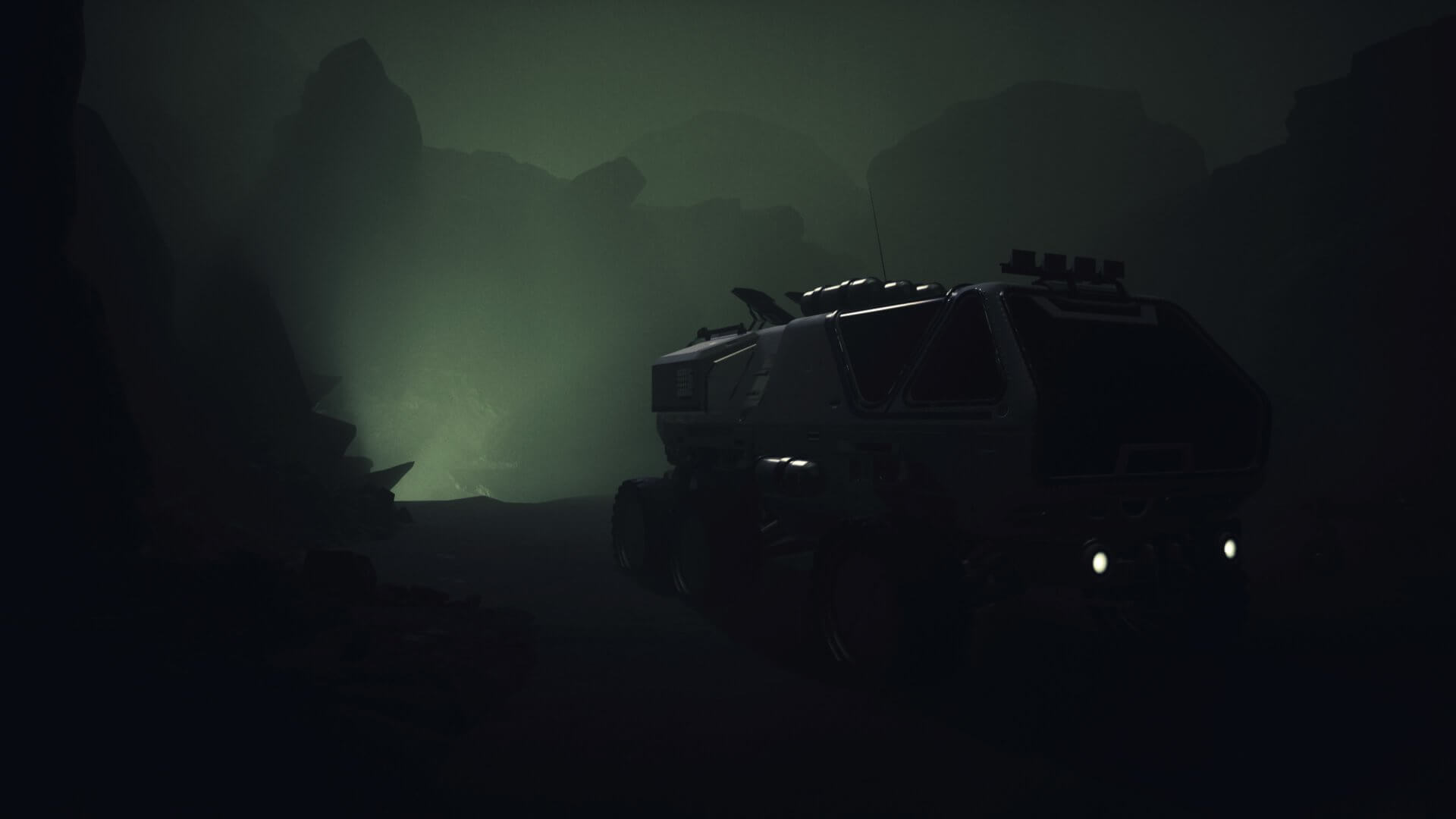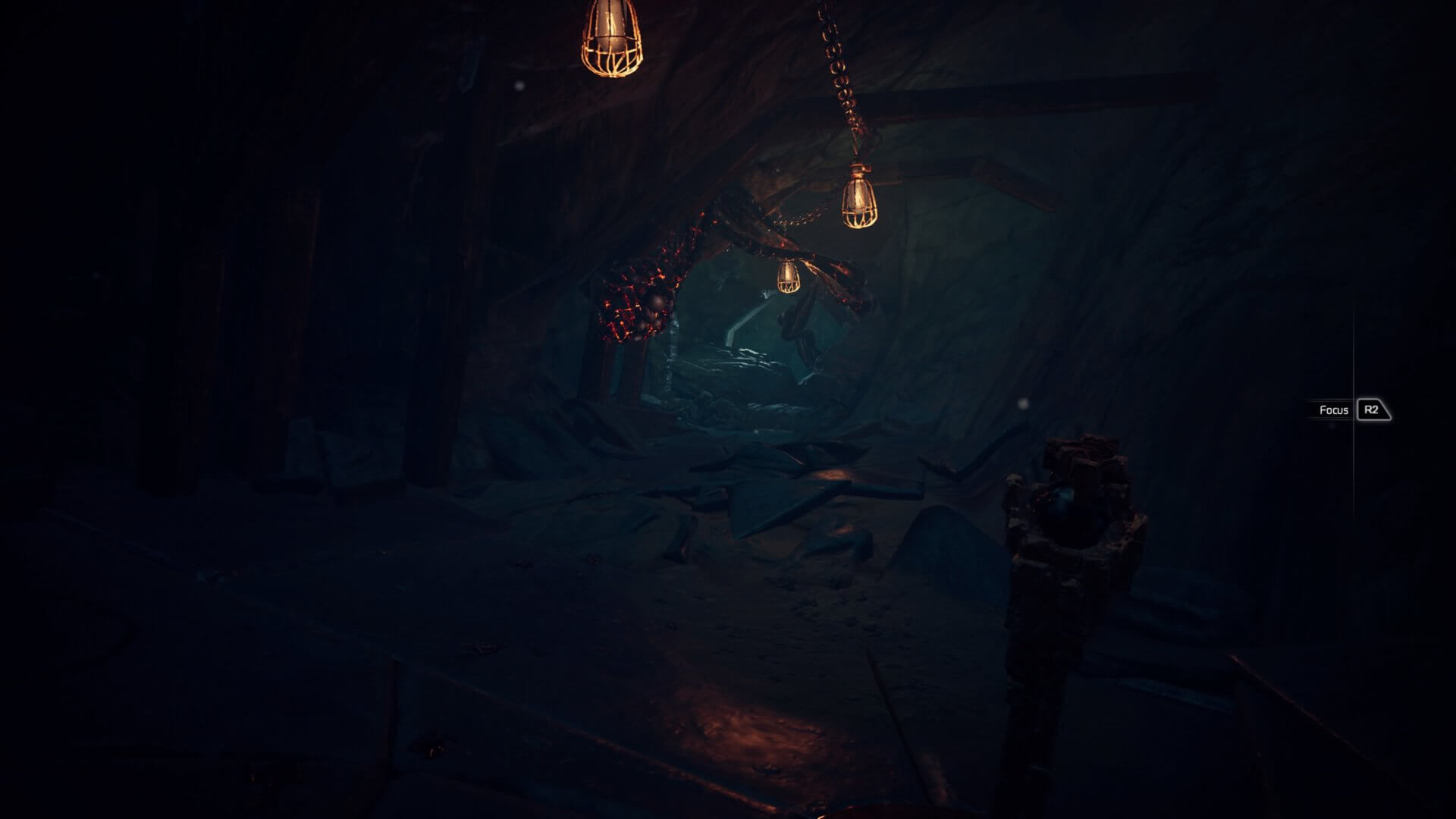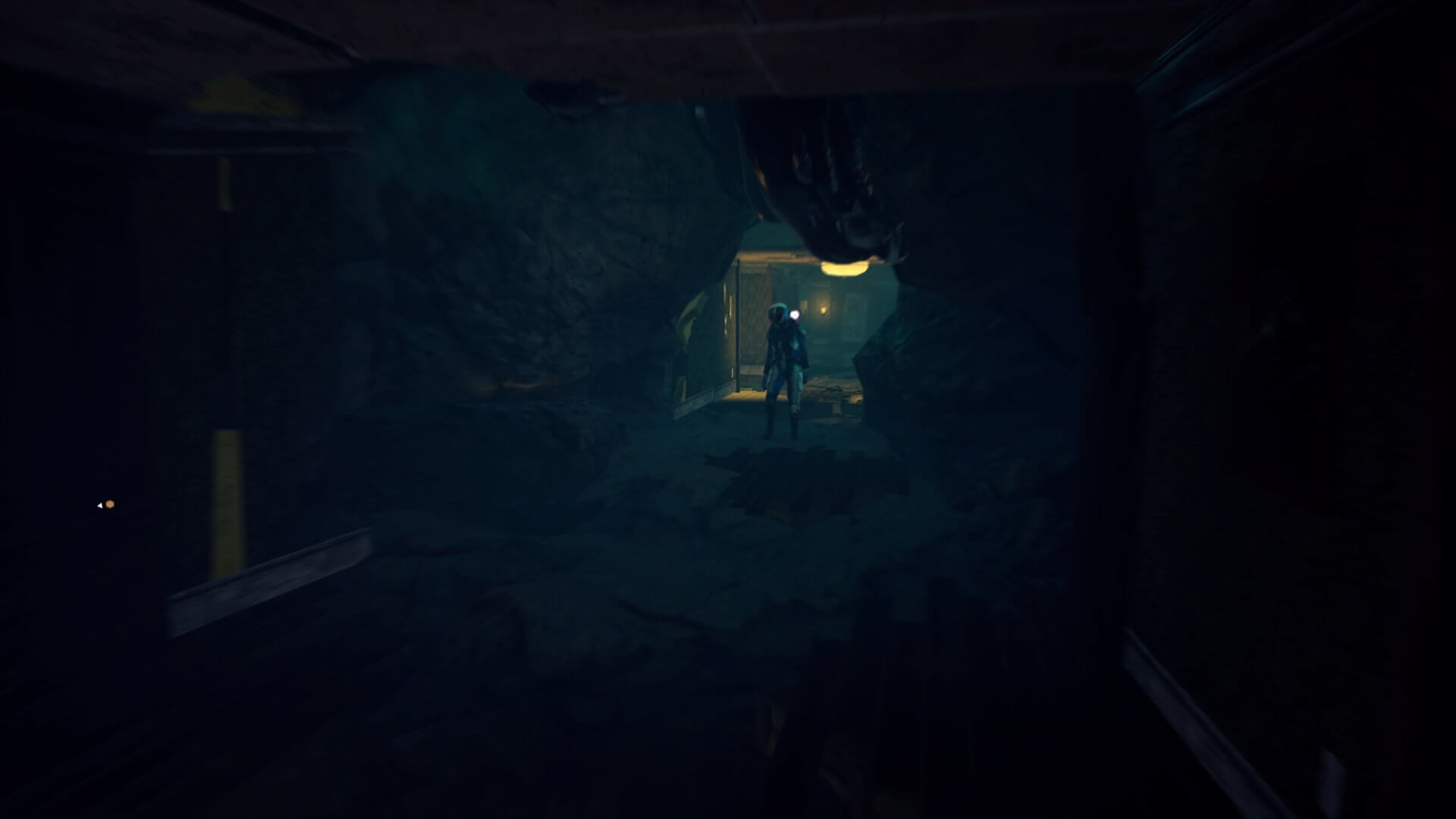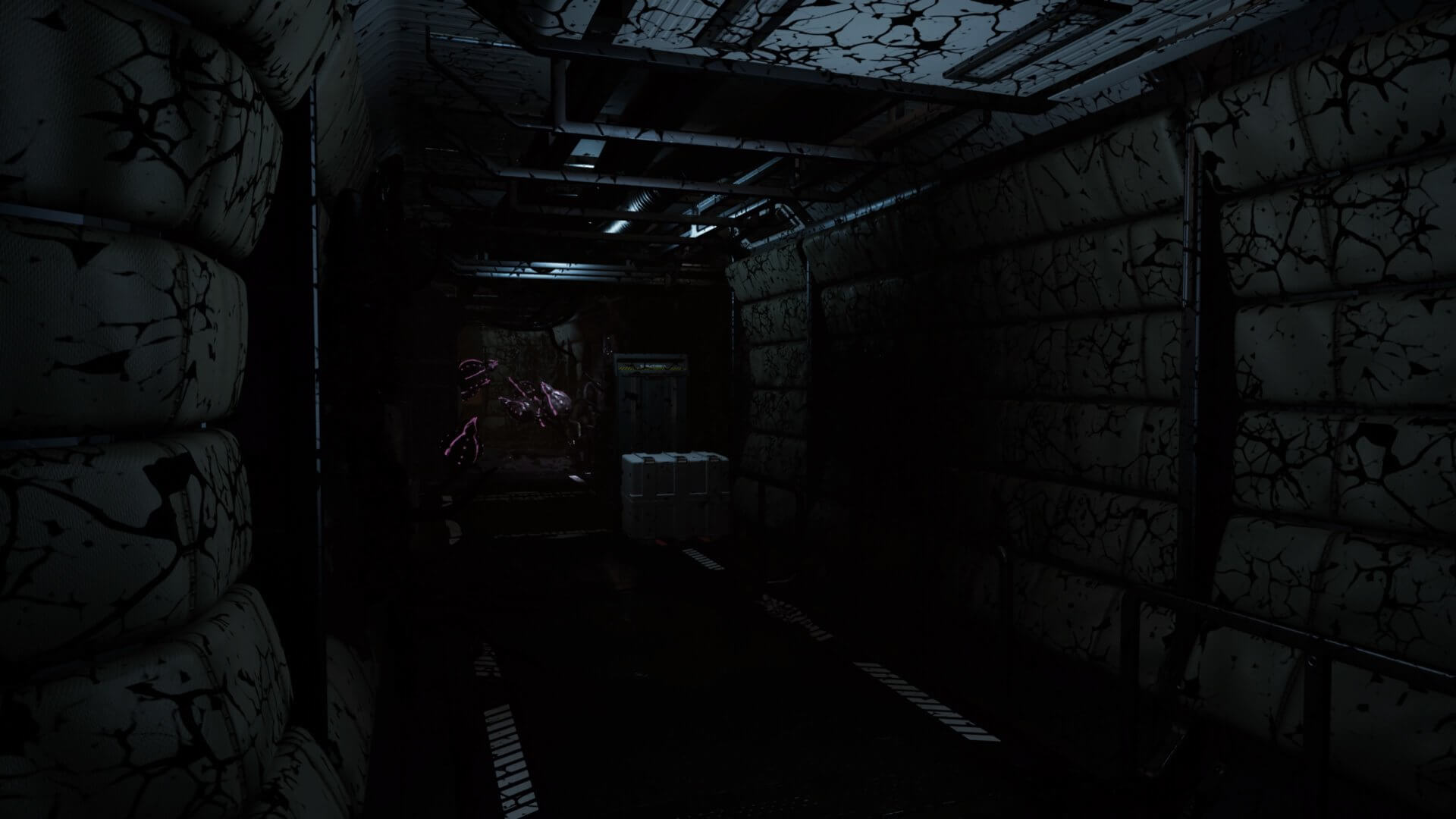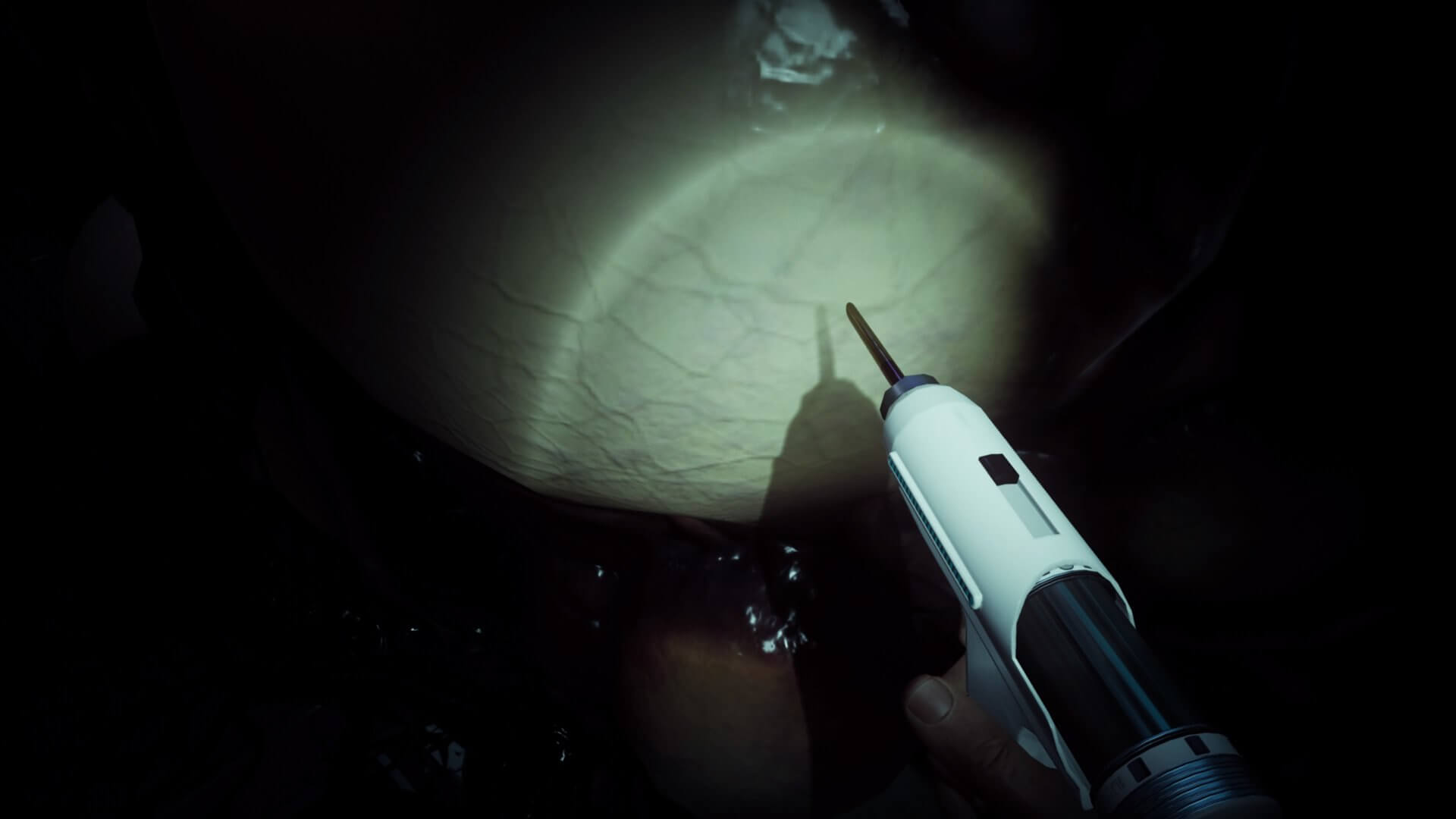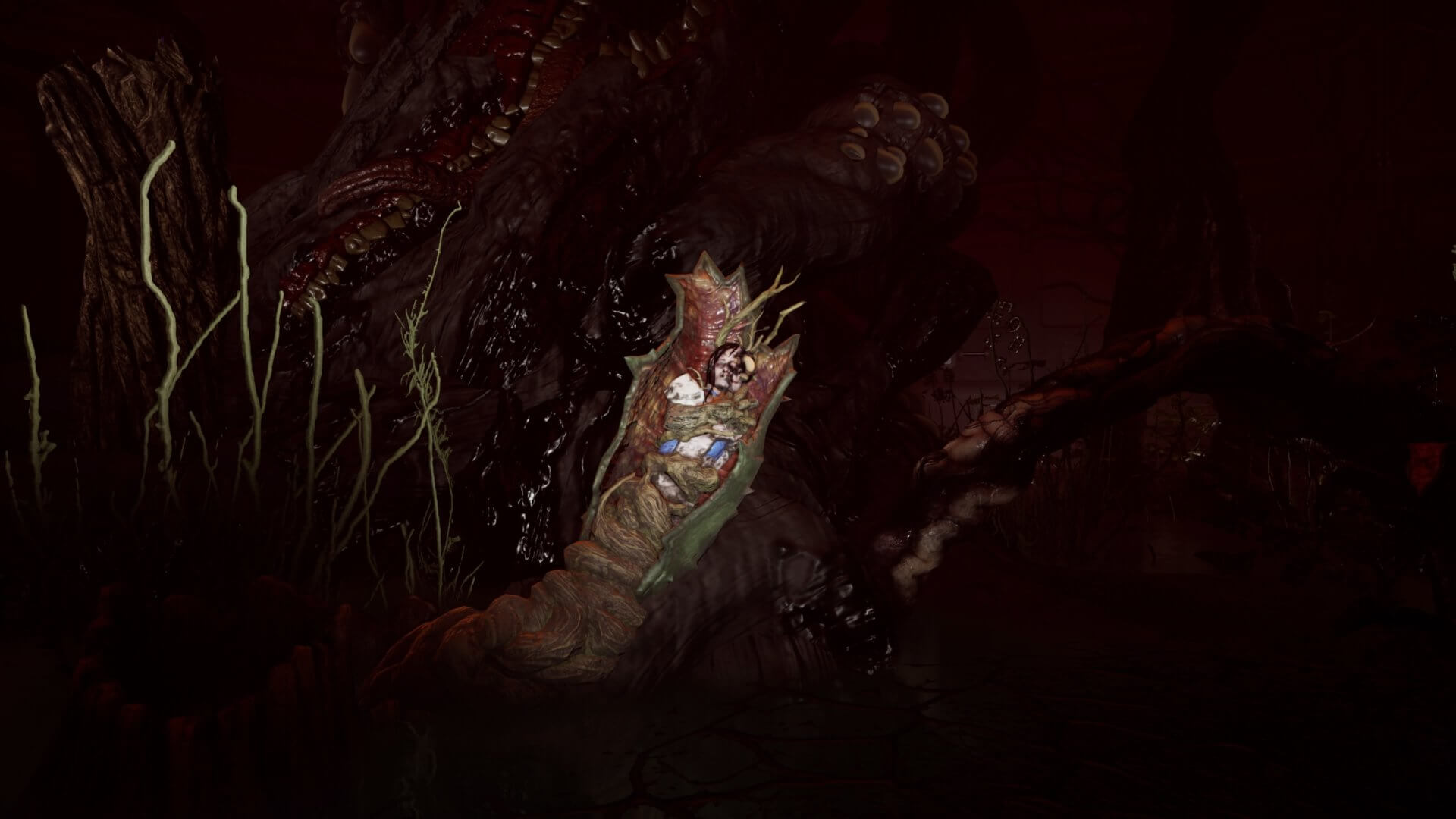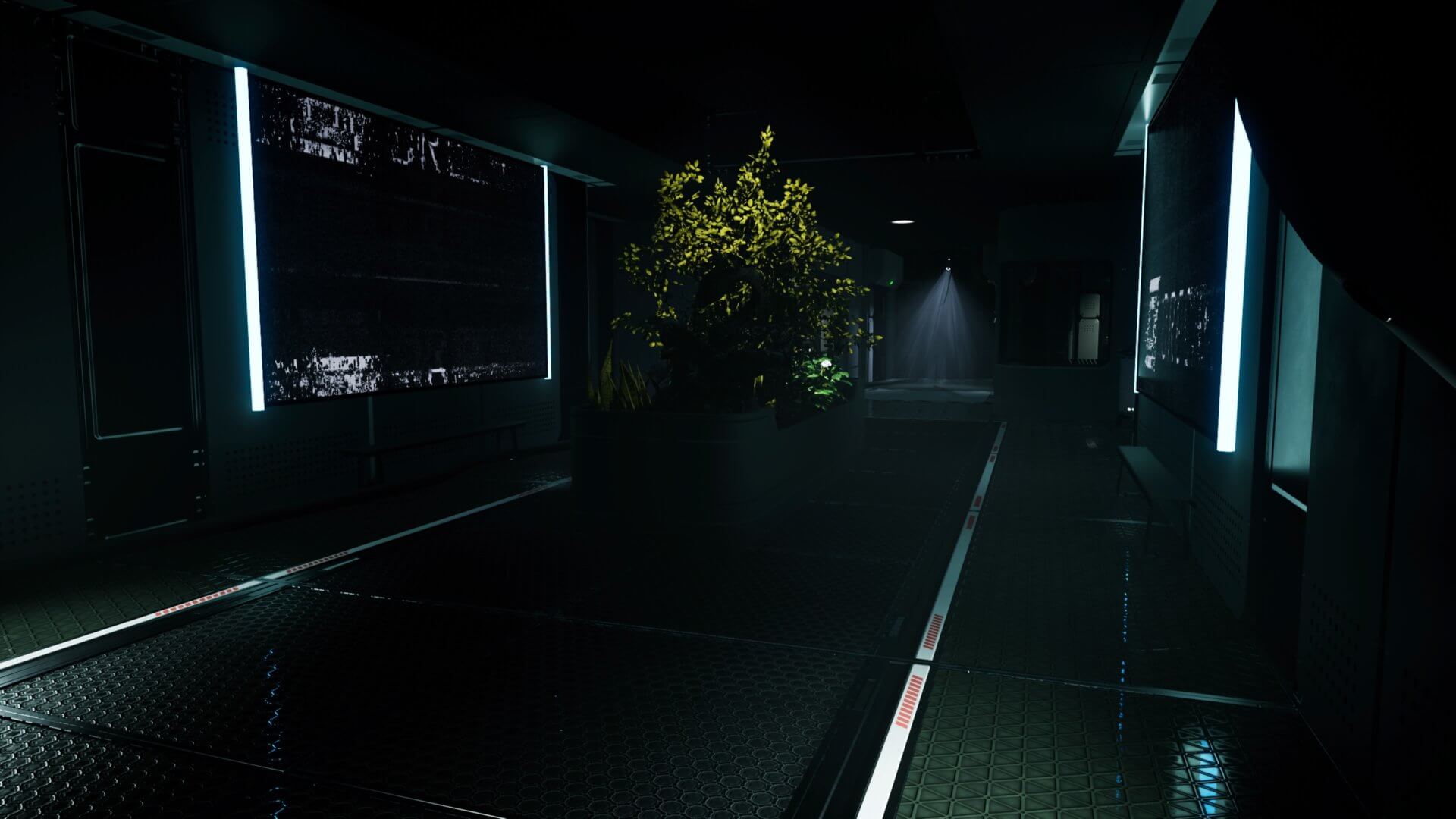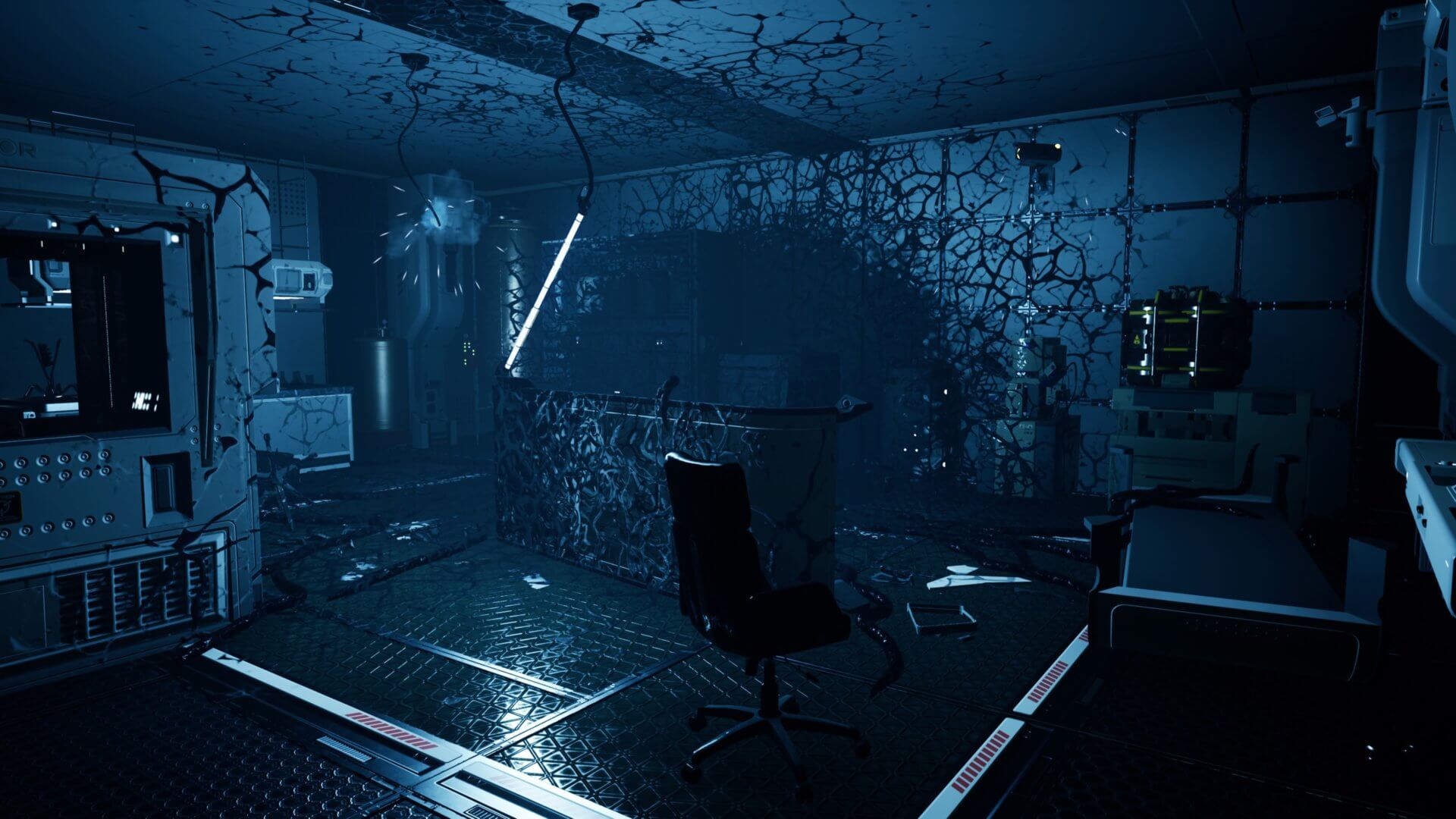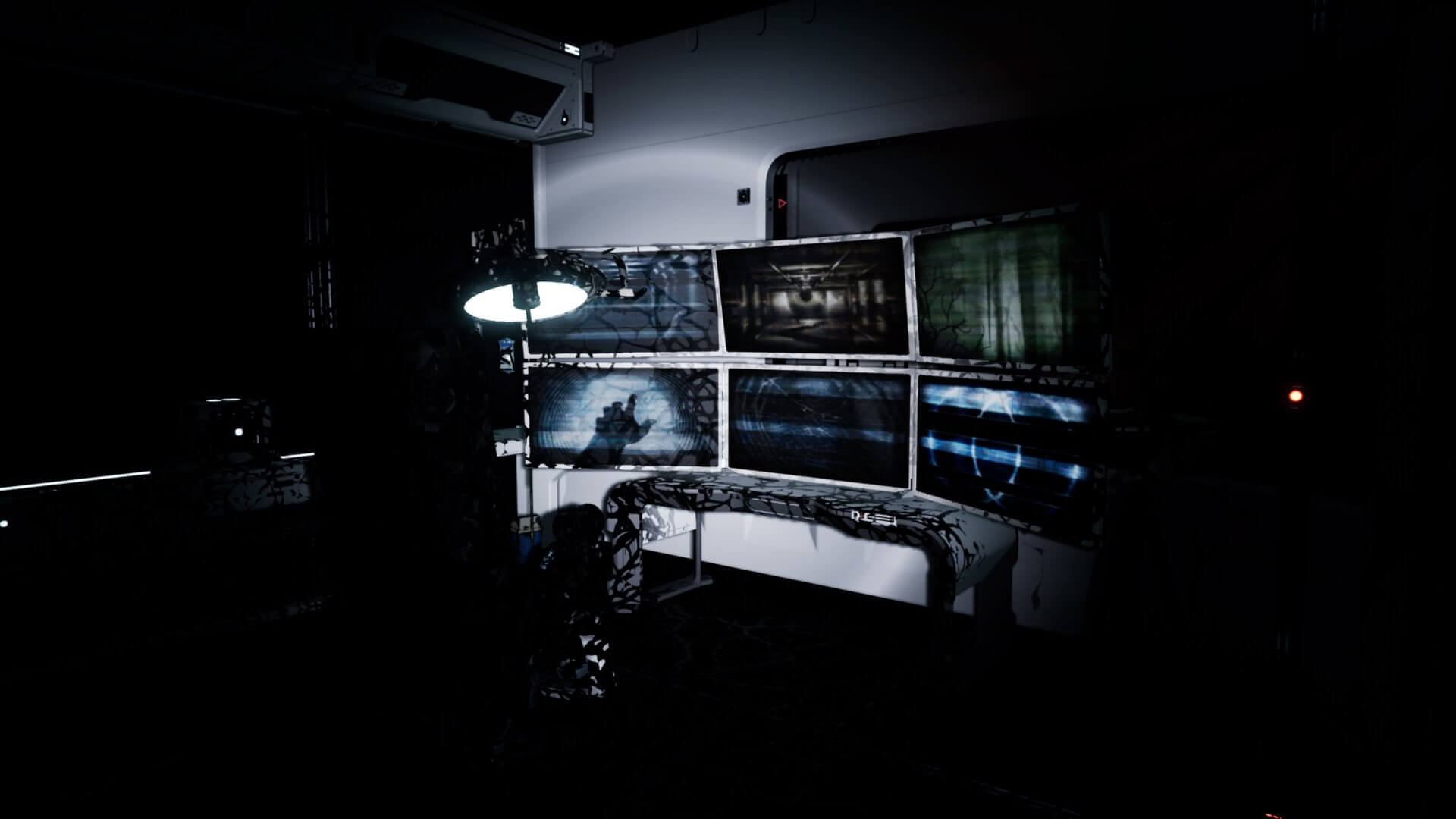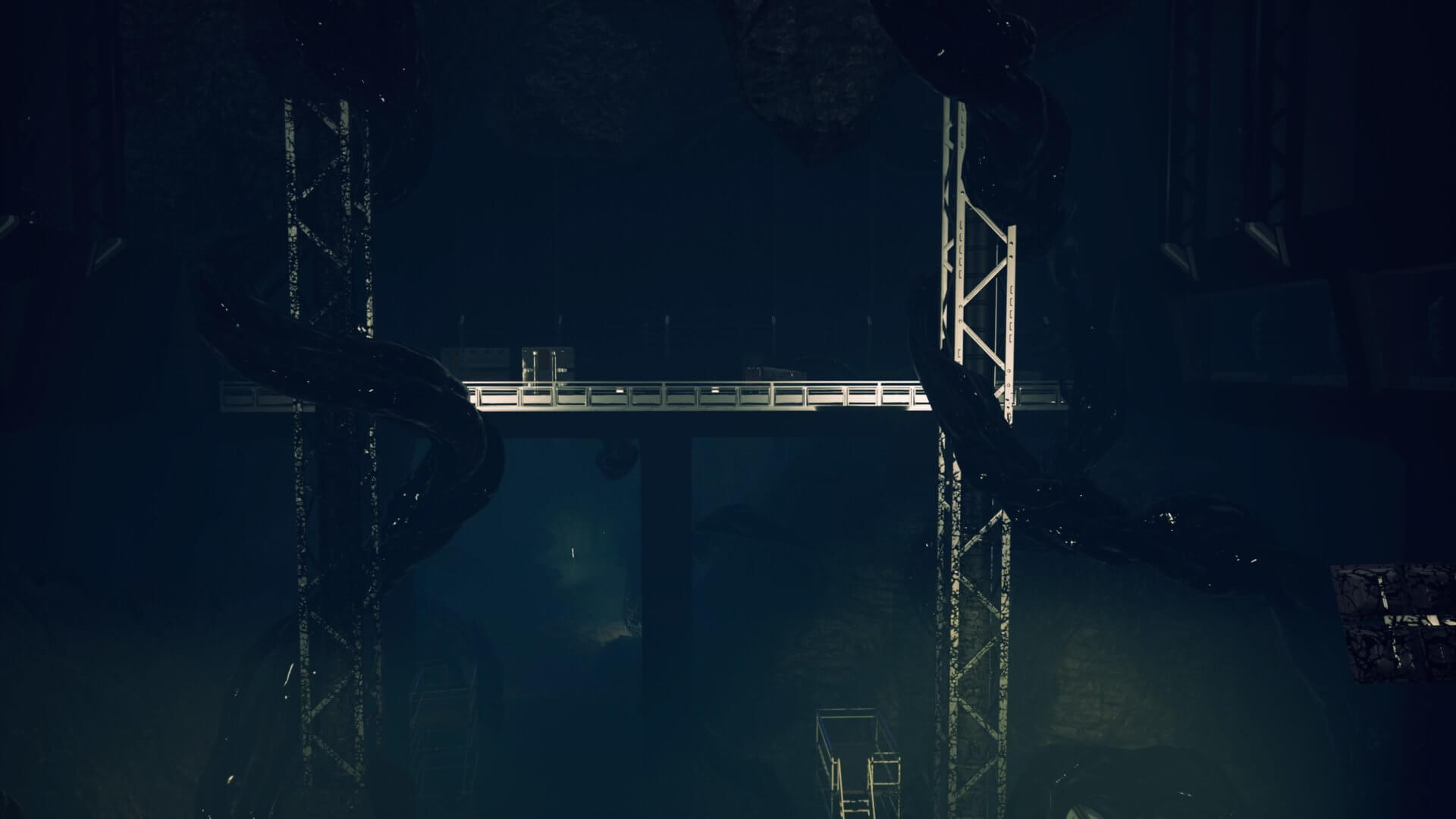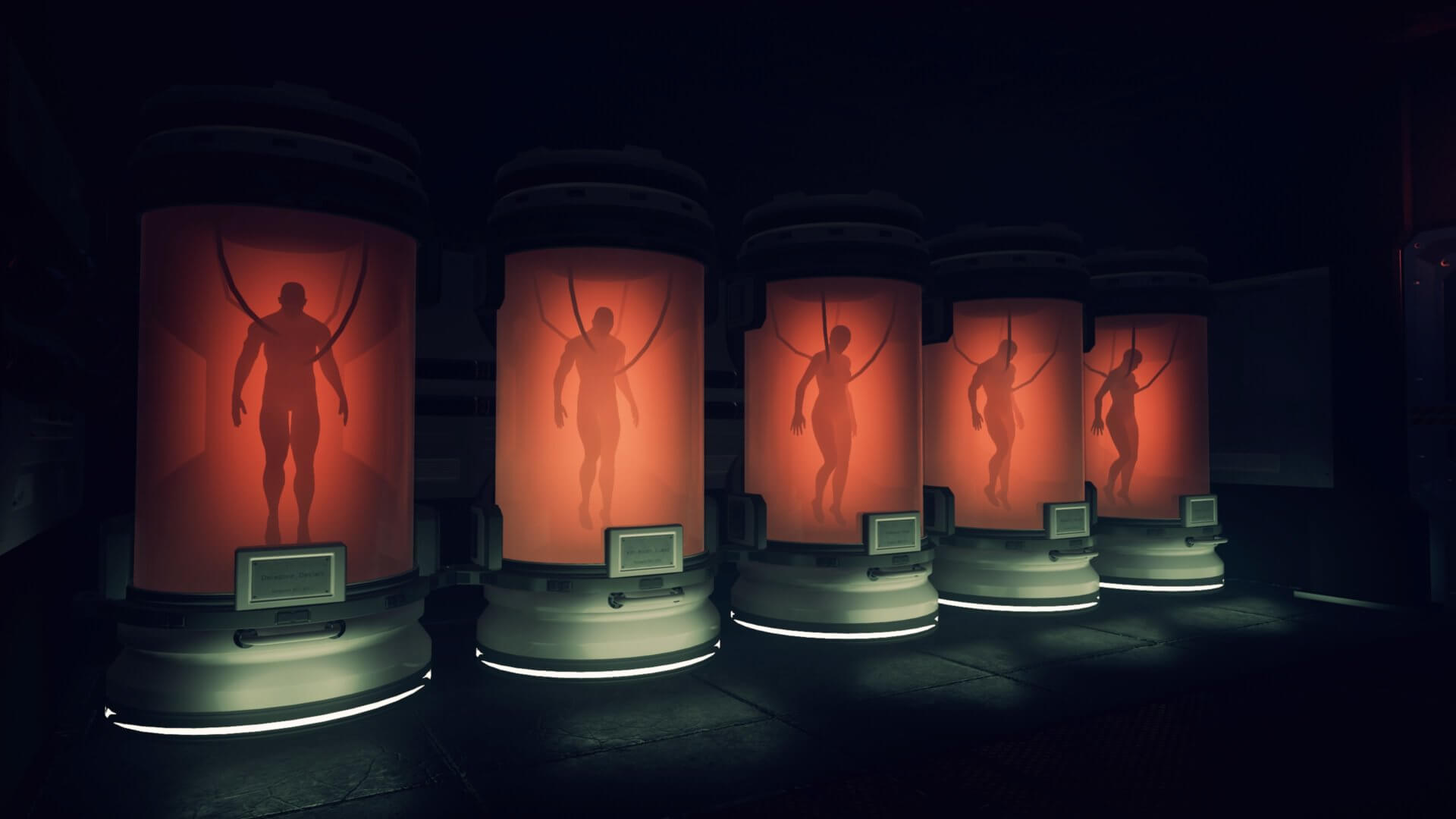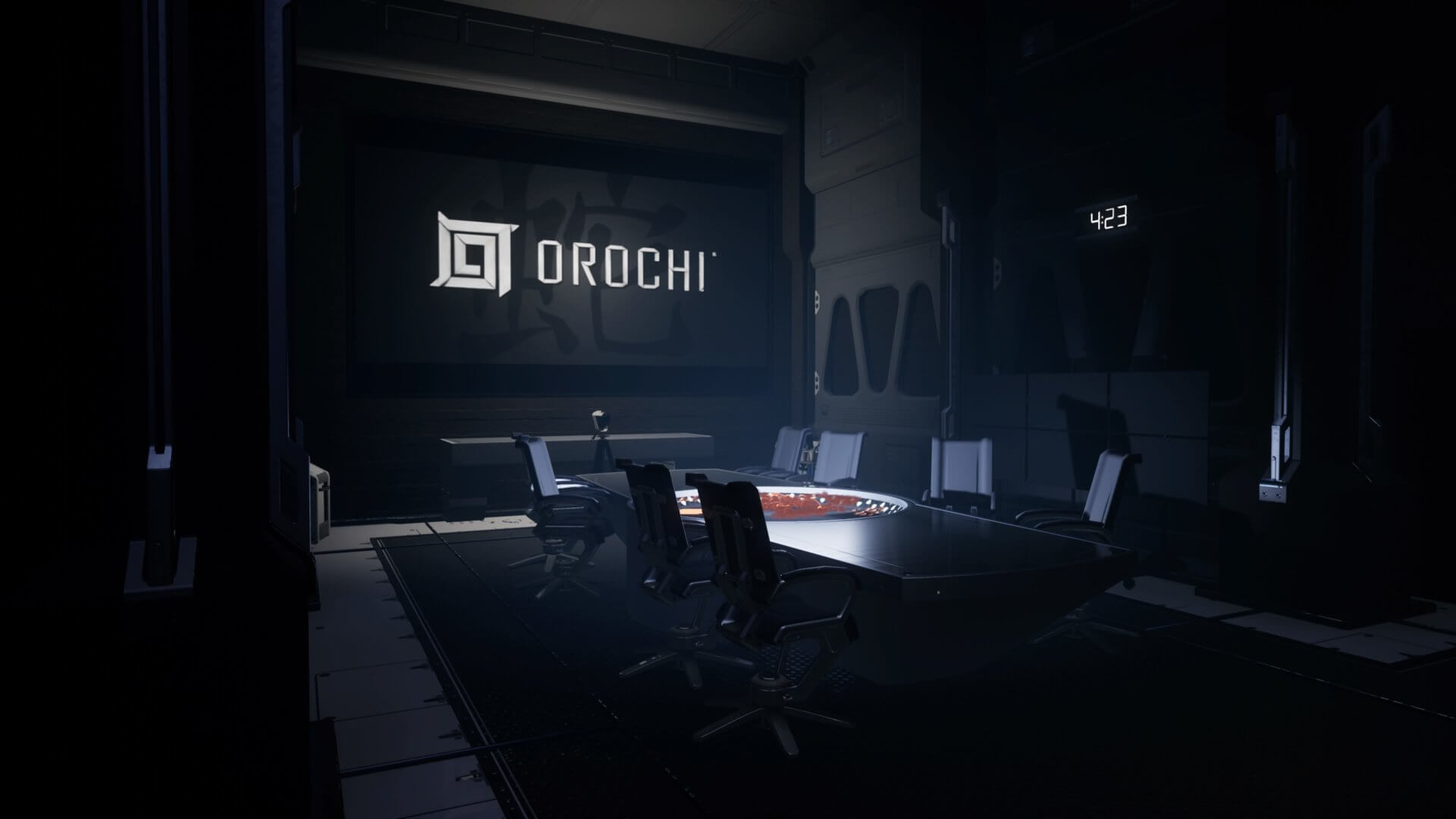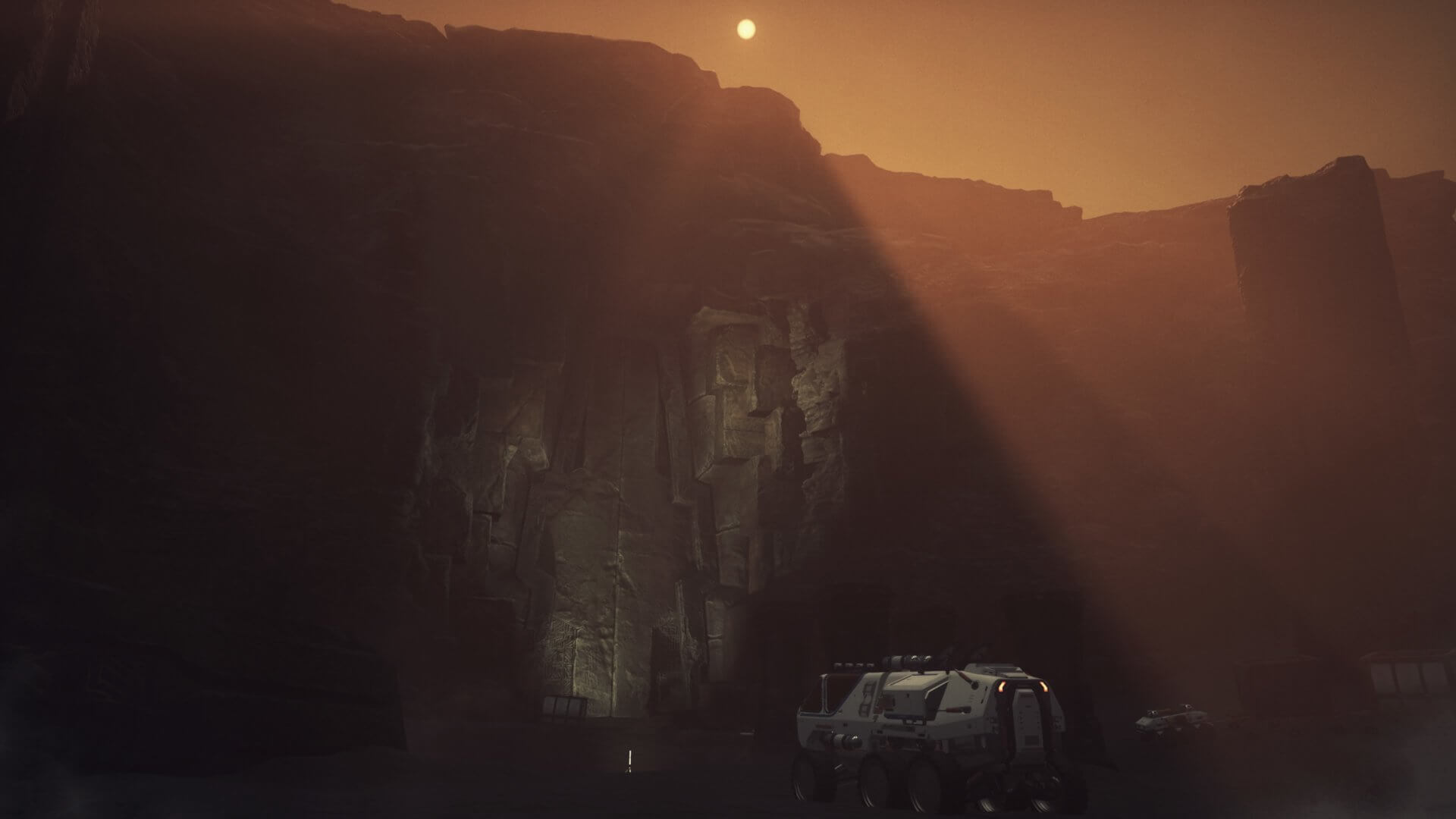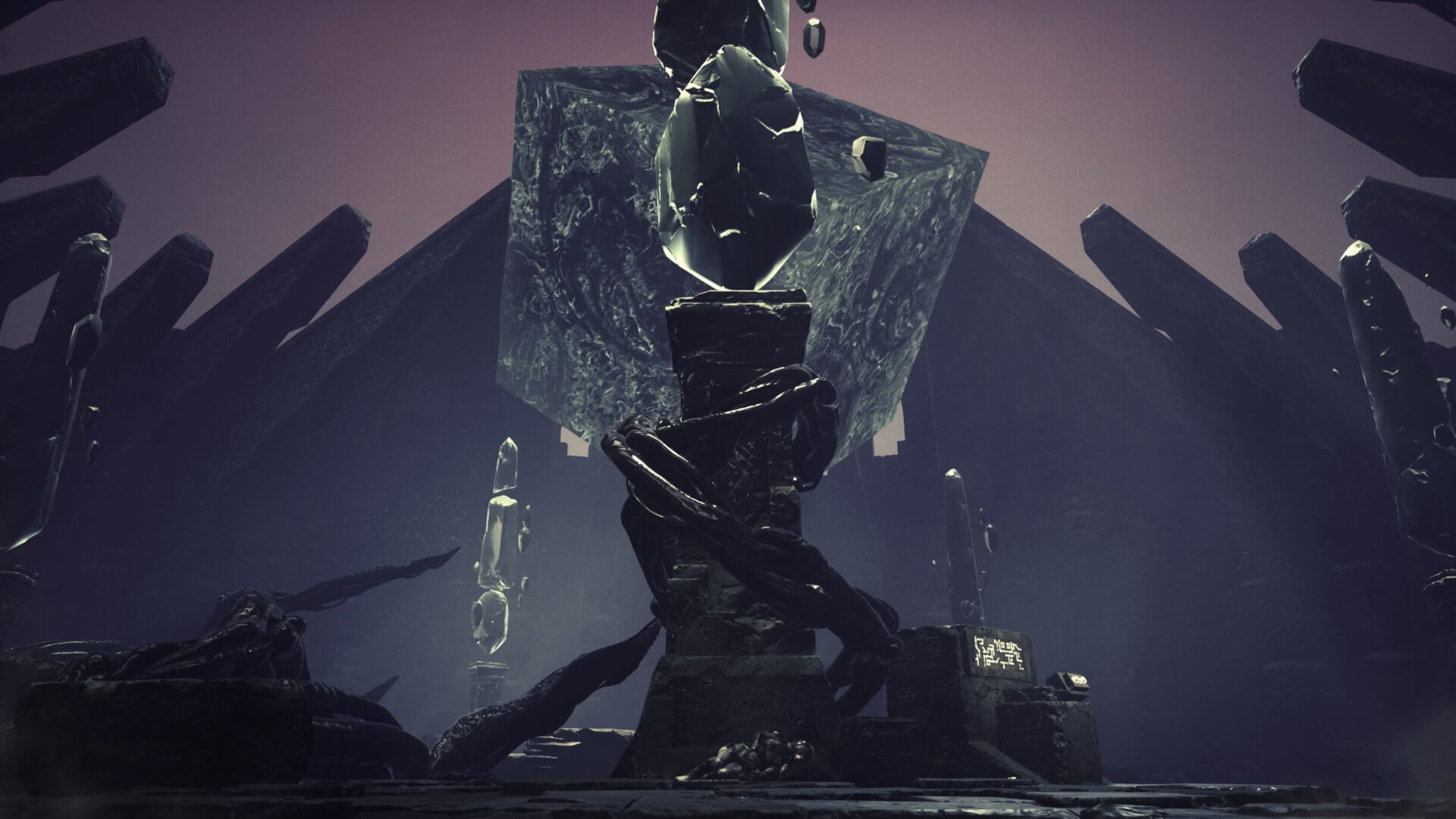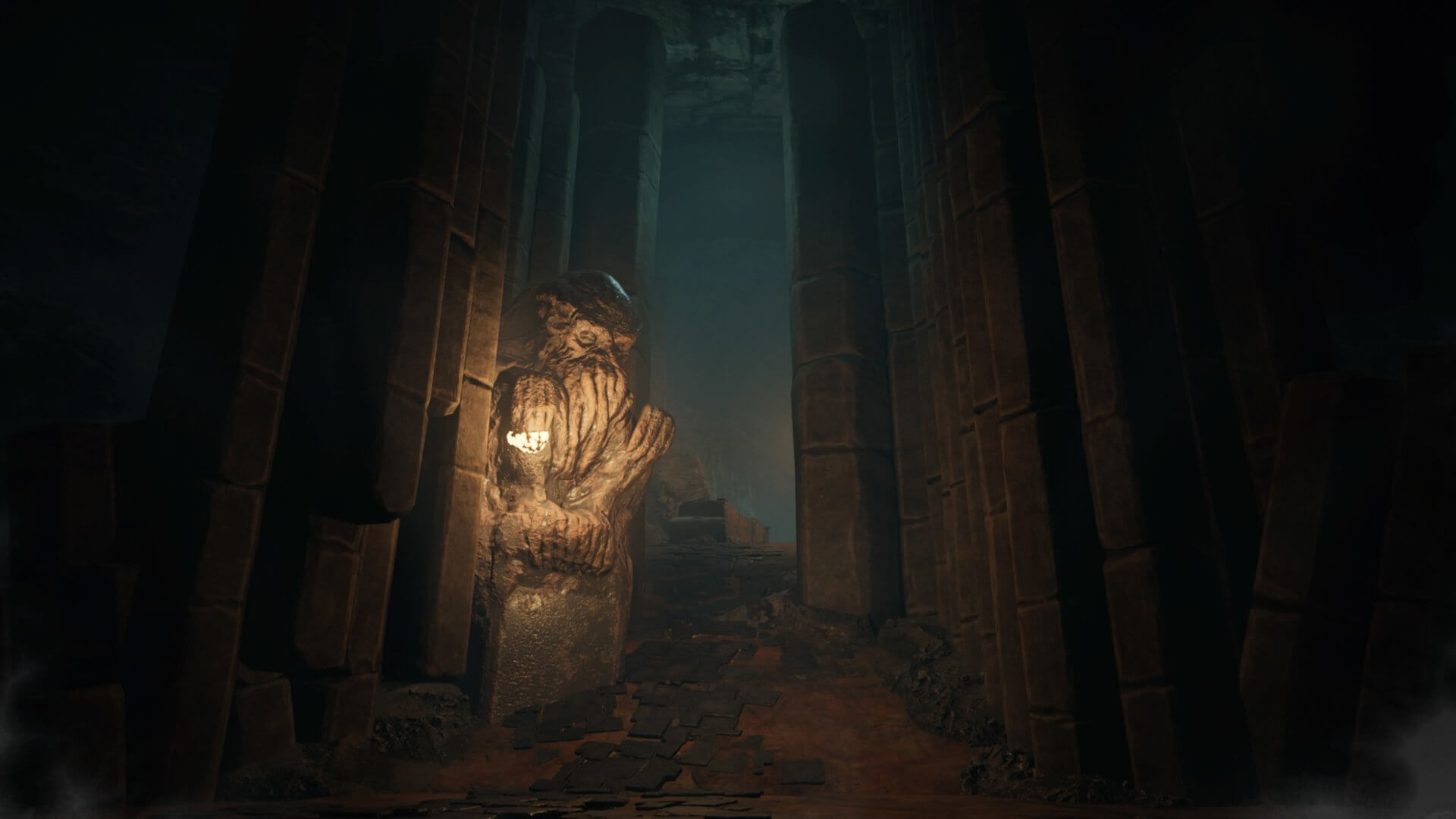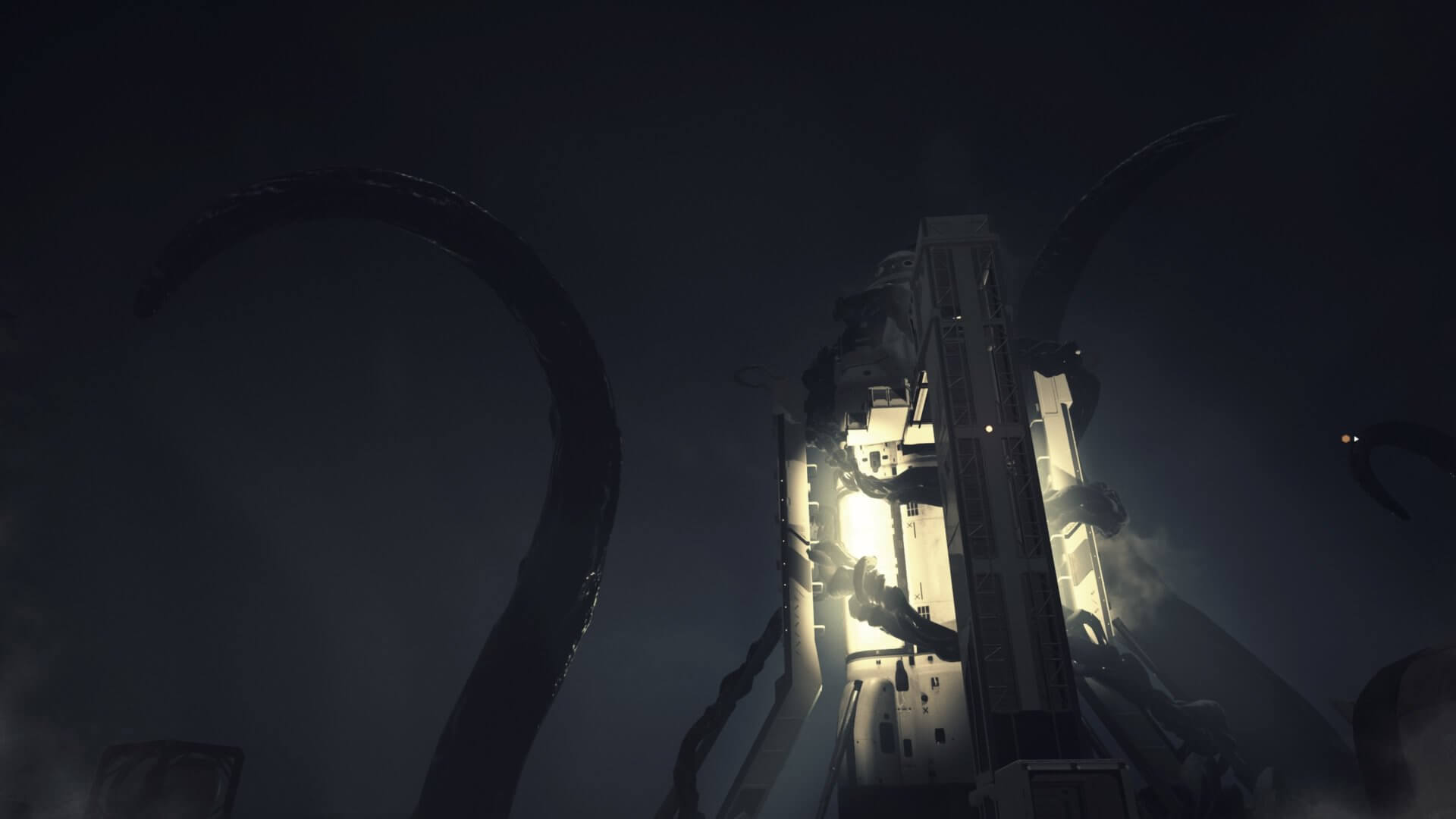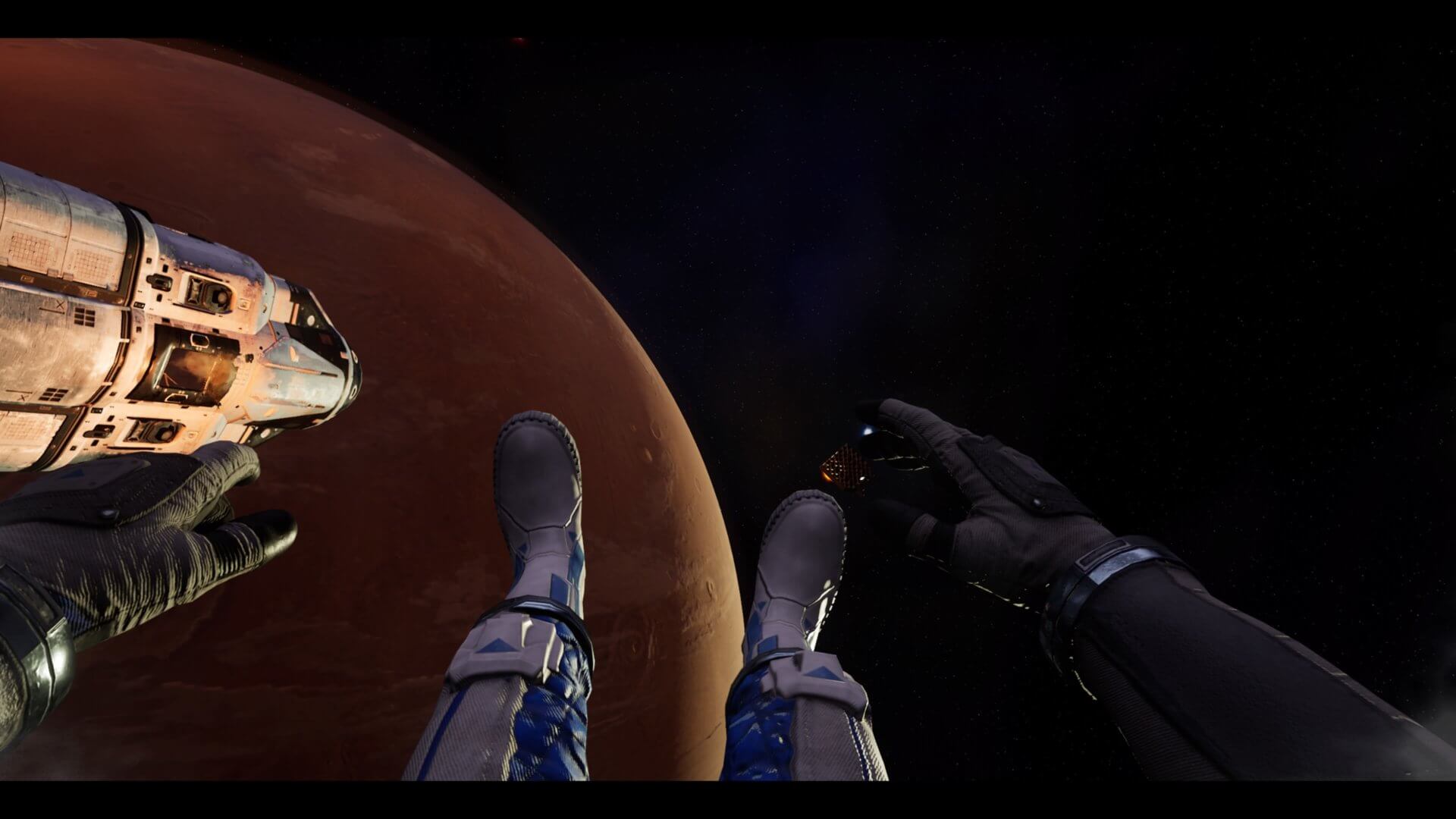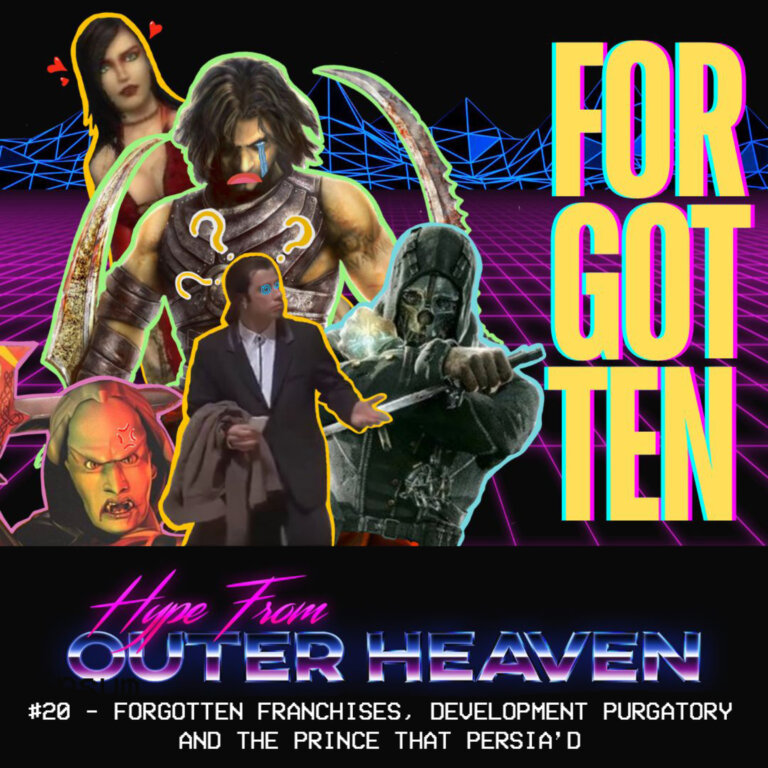“Filth! Seething tendrils of a hive ever-expanding…”
Hailing from Tønsberg, Norway is indie developer Rock Pocket Games, with their first entry into the cosmic horror circuit: Moons of Madness. Acting as a spin off to Funcom’s PC MMO: The Secret World and taking place within the same universe; Moons of Madness is Rock Pocket’s attempt to dive into the dark realm of H.P. Lovecraft, following a shuttle crew on Mars on that never ending quest for knowledge, irrespective of the forces that awaken in its pursuit. Having released on March 24th for PlayStation 4 and Xbox One, I’m going to be going over the time I spent with the PS4 version of the game; detailing the good and deconstructing the bad, ultimately discussing whether it’s worth the £24.99 asking price (EU PSN Store).
In terms of contemporary horror, the literary works of H.P. Lovecraft are some of the most widely recognised and timeless entries in the genre, with many regarding the late author as one of the most important figures of the horror genre in the 20th century. While the author’s stories have inspired a large body of works, crossing video games, music as well as horror movies themselves (Stuart Gordon’s Re-Animator and From Beyond are two of the best on offer) it would be the Cthulhu Mythos that has been one of the biggest influences on the genre as a whole, with the Great Dreamer himself being one of the most recognised icons of horror in popular culture today. In recent years there has been a renaissance period of Lovecraftian horror in video games, with the two most prolific examples of the Cthulhu Mythos being 2018’s Call of Cthulhu (see my review here) and 2019’s The Sinking City, both of which explored the themes presented within the original 1928 short story: The Call of Cthulhu, featuring private investigators in the early 20th century investigating communities directly affected by the influence of the cosmic behemoth, eventually succumbing to insanity themselves. Moons of Madness is one such other title, taking the format out of the early 20th century and into the future as part of a space exploration crew searching for alien life on the planet Mars.
The game places you in the moon boots of engineer: Shane Newhart, who is part of a research vessel called the Invictus, sent to the Mars Base of the Orochi corporation (Weyland Yutani vibes anyone?) to prove the ‘Rule of Two’ theory: that if two distinct examples of microbial alien life can be discovered on Mars, it proves that the existence of extra-terrestrial life outside of Earth isn’t just an isolated anomaly. The game begins with Shane performing regular maintenance and menial repairs to the facilities’ systems and solar panels, setting up the game’s primary focus on puzzle solving. It’s not long before events begin to take a sinister turn, with Shane attempting to discover the true nature of the Orochi corporation, as well as their experiments with a substance known as the zero-point pathogen. The Z-Path (official in-game abbreviation) is the designation for a black, oil-like substance that is native to Mars and has integrated itself into the base’s hydroponics system, creating distinct and aggressive flora, complete with its own black, Lovecraftian-esque tentacles hindering Shane’s progress at every turn. Shane eventually finds himself embroiled in a secret conspiracy involving ancient alien artifacts, the childhood disappearance of his mother and the ancient entities that slumber within the two moons orbiting Mars: Deimos and Phobos. While the narrative is heavily steeped in Lovecraft’s lore, it has too many strands going at the same time to present a flowing, cohesive (by Lovecraft standards) story, which makes the game somewhat hard to follow for someone not versed in the subject matter. Additionally, the game has the same trope as many other games of its ilk, by having most of its story explained through files and terminals littered throughout the game (some of which are easily missed) making Moons of Madness one that you’ll want to take your time with if you care to explore it’s confusing (yet interesting) narrative structure.
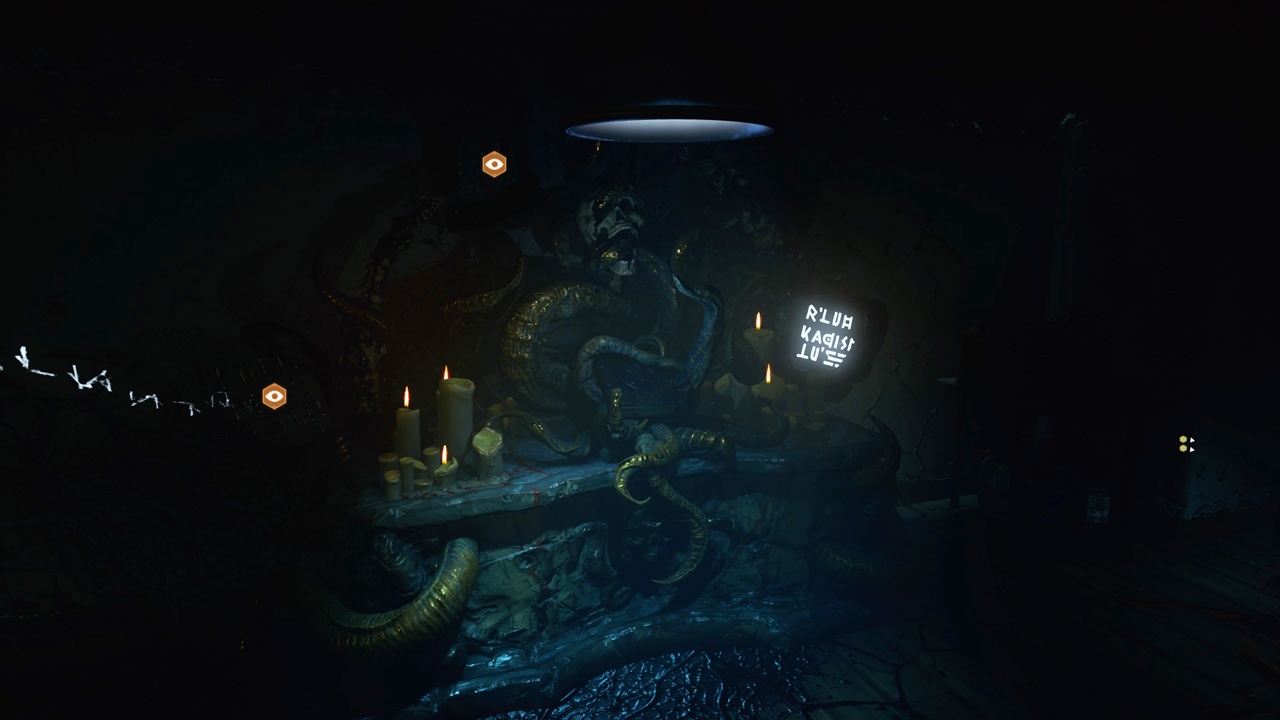
In terms of Gameplay, Moons of Madness loosely (and I do mean loosely) follows the ‘run and hide’ formula that was initially laid out in Amnesia: The Dark Descent, which many modern horror IPs have used as a foundation since the game’s release in 2010. The core gameplay loop resolves around environmental puzzles which is directly complemented by exploring your surroundings, and even though the game is billed as a ‘cosmic horror’ title, there hardly anything to speak about in the scares department. Outside of the occasional jump scare or chase sequence, there is very little in the way of any real threat within Moons of Madness, which is unfortunate considering the source material that it draws inspiration from. What moments that are reserved for contact with enemies are very much scripted affairs, offering boss fights with QTE’s throughout or chase sequences that force you to run down a linear path, which feels very shoehorned in, matching up with the game’s narrative that jumps all over the place over the course of the five to six hours you’ll spend playing the game. It isn’t all doom and gloom though, as the game does manage to maintain somewhat of a solid atmosphere throughout, due to excellent environment design, stellar ambient lighting and a haunting soundtrack to boot (giving an almost Alien: Isolation-esque feel to it at points). The points in the game that shift between reality and the deepest recesses of Shane’s psyche also add to the atmosphere tenfold, offering a very authentic Lovecraftian experience, albeit lacking its bite somewhat.
As aforementioned, the most prolific aspect of the gameplay in Moons of Madness are it’s puzzles, some of which present a significant challenge which requires the player to make good use of the ol’ grey matter (without the aid of cosmic influence) as well as the many computers and files dotted around the environments for clues on how to solve the puzzles within; some of them require some serious thought, with one puzzle in particular even requiring some basic chemistry knowledge to get you beyond it, offering an interesting dynamic not seen in games of a similar ilk. The primary source of Shane’s engagement with the world is through his Biogage, a wrist-mounted computer that allows you to interact with your surroundings through controlling security cameras, infiltrating computer systems, even sending out specialised radio frequencies that are a means of defence against the eldritch flora that has infested the Mars base due to the Z-Path; all of these mechanics work together to reinforce the game’s exploration aspects. In terms of performance, Moons of Madness is very much a run of the mill affair, offering a pretty inconsistent 30fps on a 1080p resolution on the PS4 Pro, regularly suffering from audio issues while using headphones as well as regular frame rate drops which can sometimes hinder gameplay significantly.
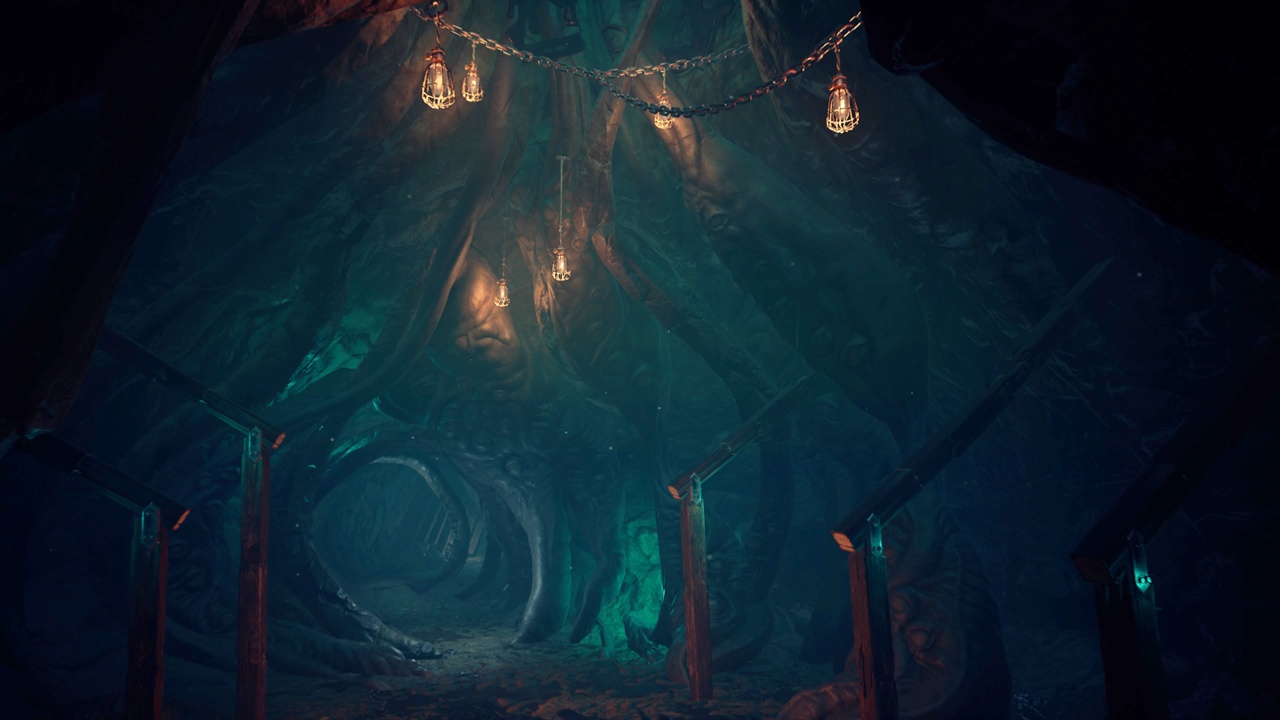
Overall, Moons of Madness is lacklustre, mixed affair with some redeeming qualities. While it’s a solid enough attempt at delving into the world of Lovecraftian horror, it misses the mark by having an incoherent story that attempts to bridge too many things together in a runtime that just isn’t long enough. Featuring some genuinely tough puzzles and an atmosphere that successfully draws from its source material, Moons of Madness will be an easy sell for some, and one to avoid for others; but at £24.99, I would definitely wait for this one to come down in price somewhat.
A PlayStation 4 review code was provided by Evolve PR.

